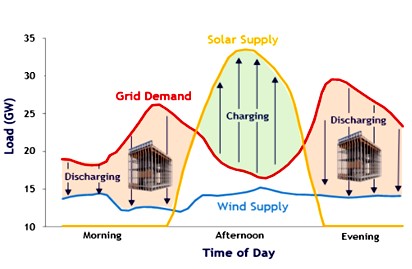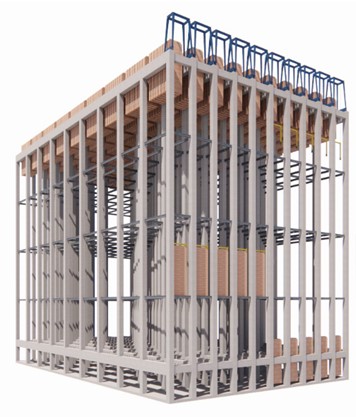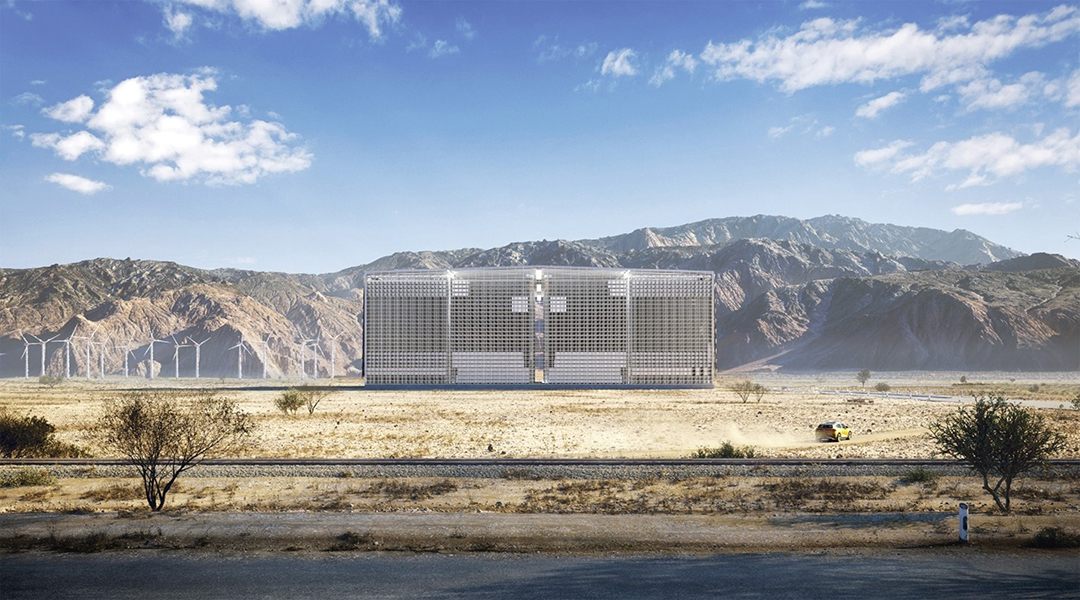Renewables are projected to increase from its current 12% of the global energy supply to 90% in 2050. Yet the widespread use of renewables is challenged by the intermittency of solar and wind, and we’re not yet at a place where we can store enough energy to avoid these problems.
As renewable energy supply increases around the world, so to is the demand for grid-scale energy storage. It has been projected that the combined global stationary and transportation annual energy storage market will increase from today’s baseline of around 600 GWh by a factor of four by 2030 to more than 2,500 GWh.
Today, global energy storage capacity is dominated by gravity-based pumped hydro (90%), followed by lithium, lead and zinc batteries (5%), with the remaining capacity alloted to thermal and flow batteries, compressed air, flywheels, and other gravity-based mechanical systems.

Within the framework of large-scale, grid-level energy storage, gravity-based solutions currently dominate the commercial space. Pumped hydro, for example, is a reliable technology with a rapid response time and proven longevity.
It suffers nevertheless from the availability, scalability, and cost of suitable mountainous and water rich land, low round-trip energy efficiency (70%), carbon-intense construction, and the challenge of co-locating solar and wind.
Gravity energy storage
I wrote two ASN articles in 2019 about some exciting new developments in storing renewable energy as gravitational potential energy by lifting and lowering heavy objects (Gigawatt Electricity Storage Using Water and Rocks and Climate Change Will Require Heavy Lifting). At the time, a Swiss private company founded in 2017 that caught my attention was Energy Vault. In a demonstration project built and showcased in Switzerland, they showed the first use of cranes to lift and lower heavy composite blocks into massive architectures to respectively store and release significant amounts of renewable electricity.
Importantly, the composite blocks enable the use of alternative materials to replace environmentally-unfriendly substances like concrete, which accounts for 7-8% of greenhouse gas emissions. In addition, the technology can accommodate the recycling of various pre-existing waste materials, which in return helps large utility and industrial companies transform financial and environmental liabilities into infrastructure assets to support their transition to a fully circular economic approach.

For example, coal bottom ash waste and retired wind turbine blades can be re-directed from landfills into the company’s custom-made composite blocks that anchor the gravity-powered systems. By maximizing the use of locally sourced soil, sand, and waste materials — including outputs from fossil fuel production — Energy Vault’s supply chain design reduces the impact of greenhouse gases from the transport sector while increasing jobs for local economies.
The result is an end-of-life solution for materials that are difficult to break down and can have negative environmental consequences. This beneficial reuse eliminates waste and enables the continual use of local resources within the framework of a circular economy.
During lifting, electricity is stored as gravitational potential energy in the blocks, and on lowering, the stored potential energy drives a motor generator to regenerate electricity with as little loss as possible to maximize the efficiency of the process.
The technological performance and commercial potential of this gravity-based system relative to other new entrants into the energy storage space was not apparent at the time, especially the levelized cost of electricity in $/MWh compared to lithium-ion batteries. Somehow, extremely tall cranes that lift and lower massive blocks in huge construction sites did not seem to be a practical global solution to grid-scale renewable energy storage.
Fast forward to today and I have changed my mind. As of April 2022, Energy Vault became listed on the New York Stock Exchange, and with the breathtaking news of its latest gravitational energy storage system, it is one of the most exciting companies to watch.
In just three years it has established an impressive global reach with its advanced gravity storage system on five continents, with more than US$32B earmarked projects over the next five years.
What has changed to elevate Energy Vault to such great heights?
It’s simple: They have simplified their gravity storage system by integrating the lifting-and-lowering of heavy weights into a familiar “elevator” style building design that is compatible with all international building codes. Plus, they have perfected the manufacturing process of their eco-friendly and fully recyclable composite materials.
The Energy Vault system literally can be built anywhere a building can be built. It is scalable on demand with no topological and geographical constraints, having flexible modular construction with the capacity to deliver GWs of power over short and long enough durations to handle solar and wind intermittency shortfalls.
The energy storage system can also withstand harsh and changeable weather conditions, it is resilient to storage capacity degradation over time, not reliant on carbon intensive mining and refining of rare and toxic metals, and is devoid of chemical and fire safety risks.
The round-trip efficiency or the proportion of stored to retrieved electricity is currently 83-85%, rather close to that of comparable power rating lithium-ion batteries, which hold 87-89%. Most importantly, it is purported to offer a lower levelized cost of electricity than any competing technology, particularly 60% of of today’s lithium-ion batteries — by 2025 this is projected to drop to 51%.
I believe this is one of the most promising sustainable solutions to global grid-scale renewable energy storage. It almost certainly will prove to be an indispensable piece of the circular economy puzzle, having a positive ripple effect on creating new clean technology industries and jobs, avoiding environmental liability, ameliorating climate change, and mitigating global warming.
Now that’s what I call heavy lifting!
Written by: Geoff Ozin and Athan Tountas
Solar Fuels Group, www.solarfuels.utoronto.ca
Feature image: The Energy Vault Resiliency Center (EVRC). Reprinted with permission

















